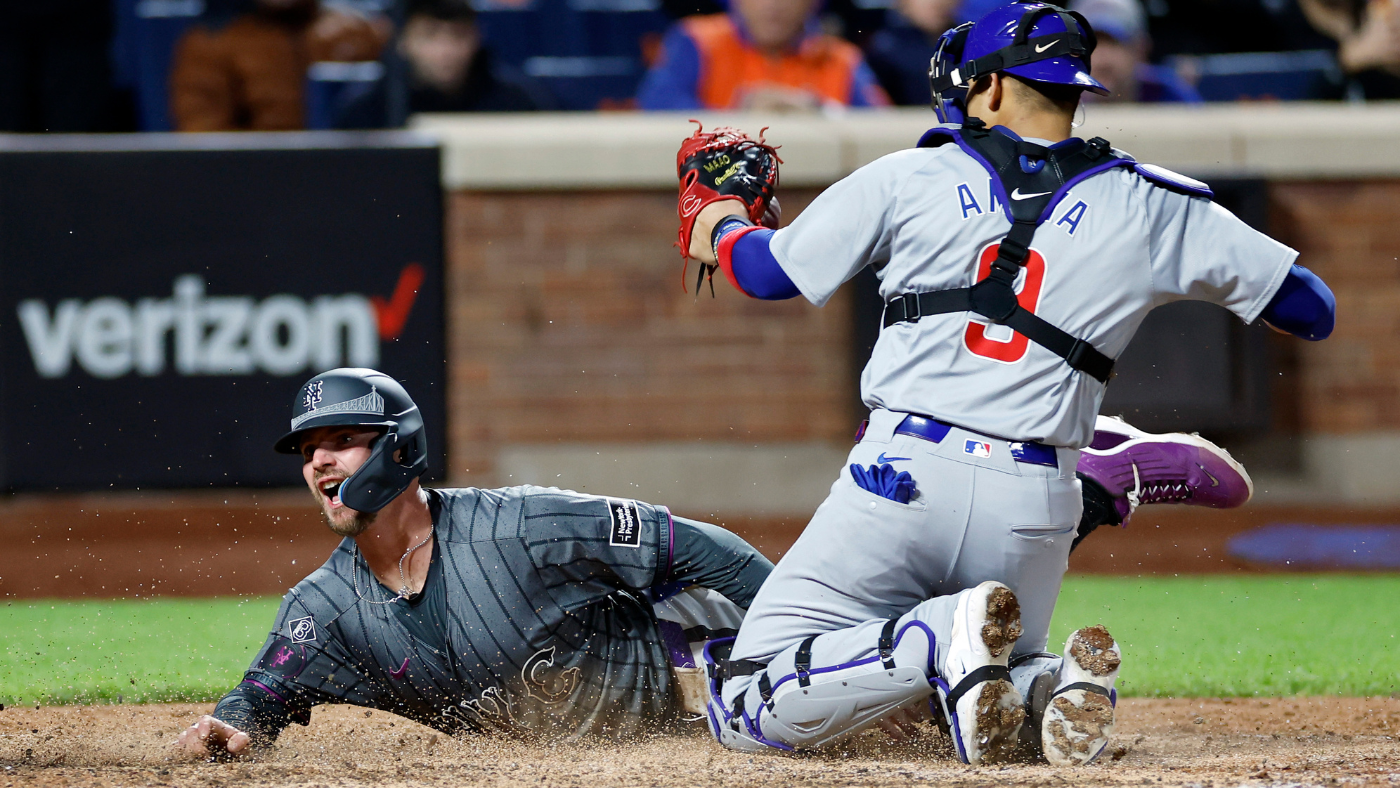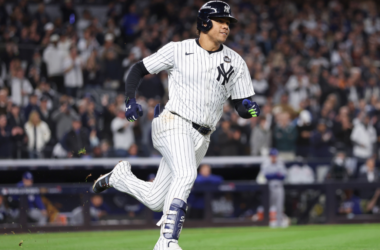
The New York Mets misplaced to the Chicago Cubs in controversial vogue on Wednesday night time, with first baseman Pete Alonso being referred to as out on the plate to finish the 1-0 sport (field rating). Alonso had been making an attempt to attain the game-tying run on a Jeff McNeil fly out to left subject that Ian Happ caught and delivered to relay man Nick Madrigal.
The decision was reviewed however upheld, with the umpires figuring out that Alonso had not touched the plate earlier than he was tagged out, in addition to that Cubs backstop Miguel Amaya had not violated the league’s House Plate Collision Rule.
Here is a have a look at the play in query. Pay shut consideration to Amaya’s setup as he prepares to corral the throw:
For reference, here is Rule 6.01(i)(2) in its entirety:
Except the catcher is in possession of the ball, the catcher can not block the pathway of the runner as he’s making an attempt to attain. If, within the judgment of the umpire, the catcher with out possession of the ball blocks the pathway of the runner, the umpire shall name or sign the runner protected. Not withstanding the above, it shall not be thought-about a violation of this Rule 6.01(i)(2) if the catcher blocks the pathway of the runner in a legit try and subject the throw (e.g., in response to the route, trajectory or the hop of the incoming throw, or in response to a throw that originates from a pitcher or drawn-in infielder). In Rule 6.01(i)(2) to six.01(j) addition, a catcher with out possession of the ball shall not be adjudged to violate this Rule 6.01(i)(2) if the runner might have prevented the collision with the catcher (or different participant protecting residence plate) by sliding.
Mets supervisor Carlos Mendoza, in his first yr on the helm, disagreed with that evaluation. “I believe they obtained the flawed name,” he said after the game. Mendoza defined that his understanding of the rule, as knowledgeable by a springtime memo despatched to all managers, bans catchers from straddling the plate with out possession of the ball.
SNY’s Andy Martino tweeted an image from the memo alongside footage of Amaya’s left foot clearly being on the plate earlier than he obtained the ball. Stated memo notes that “the next setups are unlawful with out possession of the ball and place the catcher in jeopardy of a violation” with accompanying footage of catchers who’ve their toes “on the foul line or residence plate,” “straddling the foul line,” and “in foul territory or straddling residence plate.”
Nonetheless, the MLB Replay Center issued a statement on the call that read: “the Replay Official decided that no violation of the House Plate Collision Rule occurred. The catcher’s preliminary setup was authorized and he moved into the lane in response to the trajectory of the incoming throw.”
Mets reporter Steve Gelbs on Thursday reported on SNY that the league workplace confirmed it was the proper interpretation of the rule, however that the rules had modified within the offseason.
“They did alter what the rule is,” Gelbs reported earlier than the day sport. “They mentioned they nonetheless are not looking for a catcher to have their foot on the plate. Nevertheless, if they provide a path to the runner to attain, then it’s as much as the discretion of the umpire whether or not or to not name them out or protected. And since there was a path final night time, the umpires within the replay room mentioned that it was a authorized play.”
Alonso, for his half, told reporters he thought he had snuck his hand in there before the tag was applied. “However the name mentioned I used to be out, so I used to be out.”




